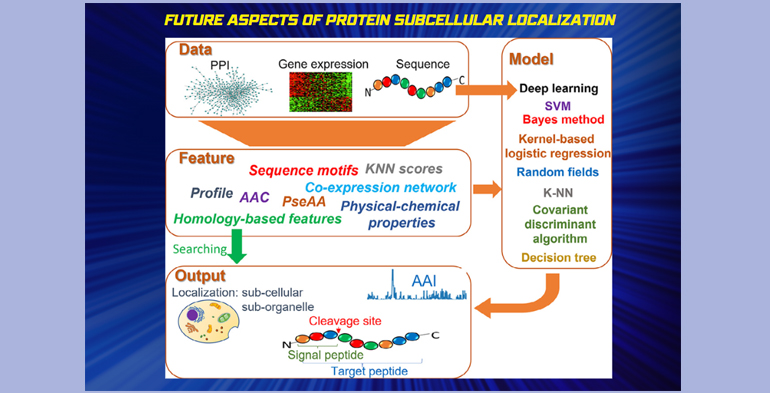
Dr. Md. Monirul Islam: Prediction of protein subcellular localization is a computational approach that aims to predict the subcellular location or compartment where a protein is likely to reside within a cell. Here's how subcellular localization prediction can be utilized for protein prediction:
Protein Function Prediction: The subcellular localization of a protein can provide valuable insights into its function. Proteins localized in specific compartments often have characteristic functions related to that compartment. For example, proteins located in the mitochondria are typically involved in energy production, while proteins localized in the nucleus are involved in gene regulation. By predicting the subcellular localization of a protein, researchers can infer its potential function and contribute to the annotation of uncharacterized proteins.
Disease Association: Aberrant subcellular localization of proteins can be associated with various diseases. For instance, the mislocalization of proteins involved in DNA repair to the cytoplasm can lead to genomic instability and increase the risk of cancer. By predicting the subcellular localization of disease-associated proteins, researchers can gain insights into the underlying molecular mechanisms and potentially identify therapeutic targets.
Drug Target Identification: Subcellular localization prediction can aid in the identification of potential drug targets. Proteins localized in specific compartments may play critical roles in disease pathways, and targeting them can lead to therapeutic interventions. By predicting the subcellular localization of proteins relevant to a particular disease or pathway, researchers can prioritize potential drug targets and design interventions that specifically target the relevant subcellular compartments.
Protein-Protein Interactions: Subcellular localization prediction can help in understanding protein-protein interactions and complex formation. Proteins that reside in the same subcellular compartment are more likely to interact with each other and participate in common cellular processes. By predicting the subcellular localization of proteins, researchers can identify potential interaction partners and investigate their functional relationships.
Experimental Design and Validation: Subcellular localization predictions can guide experimental design and validation. By predicting the likely subcellular localization of a protein, researchers can design experiments to validate the prediction using techniques such as fluorescence microscopy, immunostaining, or subcellular fractionation. Experimental validation of subcellular localization predictions contributes to the understanding of protein localization dynamics and can further refine computational prediction models.
Writer: Senior Scientist, ASRBC, ACI Seed





















